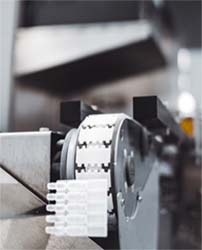Packaging Industry Standards (Pt. 1) 0:06 packaging over the last century has mostly been in glass material.
The reason for that is it is an excellent material in terms of barrier properties.
In other words, it doesn’t transmit water vapor or oxygen through it.
So it’s a great container for all kinds of different 0:22 products mostly liquids but also some solids but over the last few decades polymers have become very much Advanced.
You have things like nylon polyethylene, polypropylene certain rubbers those have replaced a lot of glass because they’re cheaper to make and they provide at or near the same properties.
In terms of protection of the product of course BFS uses polymers and specifically, ApiJect, uses polyethylene.
One of the advantages of BFS is that we don’t have to sterilize the bottle because we’re making it at the same time we’re filling.
It’s a big advantage in in terms of speed, supply chain, and just overall convenience of producing the units.
We also have for solid dose. There have been things like blister packs and Tyvek and foil and various things like that and foil is also used in partially in packaging for BFS.
The polymer industry has kind of revolutionized and made the ability to package drugs much cheaper and much faster with higher volumes.
There are a couple of Standards you’re looking at when you when you talk about a package.
The shipping industry has a few standards for example. A lot of people have heard of an edge Crush test that’s related to a cardboard
